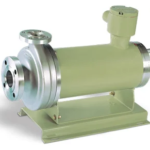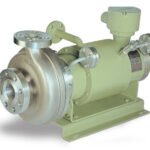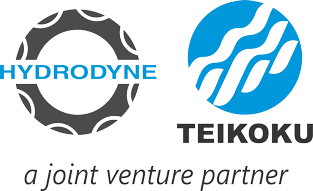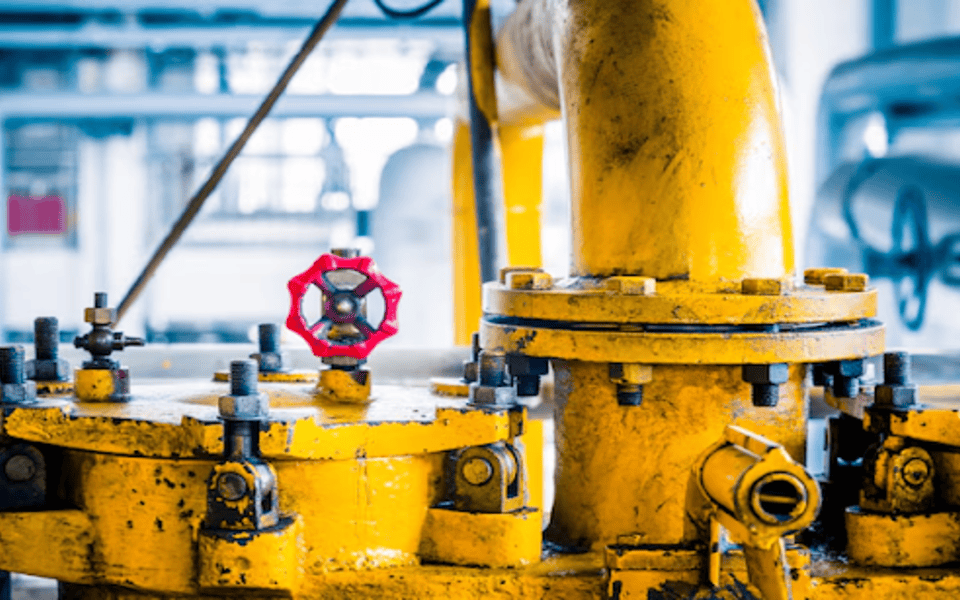
Chemical Pumps: Types, Applications & How to Choose the Right One for Your Industry
May 13, 2025
How High Temperature Pumps Are Powering Green and Sustainable Manufacturing
June 13, 2025Industrial processes don’t flinch at the heat, in more ways than one. Numerous applications depend on fluid flow at higher temperatures, be it chemical processing or power production. However, pumping fluids so hot is not as straightforward as selecting a pump off the shelf. It requires precision designing, robust components, and demanding specifications. Then there’s the high-temperature pump, a dedicated option engineered to thrive under blistering conditions.
Whether you are dealing with thermal oil circuits or molten salt transfer systems, it is essential to know about the architecture and applications of these pumps. This blog will analyse the types, applications, and key things to remember before choosing the appropriate High-Temperature Pump for your requirements.
What is a High Temperature Pump?
A high-temperature pump is a heavy-duty mechanical product intended to transport fluids above normal operating temperatures, usually more than 150°C and up to 400°C or higher. The pumps are constructed to endure high thermal stress, fluctuating pressures, and hostile fluid properties without sacrificing performance and safety.
Types of High-Temperature Pumps
All pumps are not created equal, particularly when subjected to thermal stress. The following are the main variations appropriate for high-temperature applications:
Centrifugal Pumps
- Best suited for high-volume, continuous flow applications
- Widespread use in oil refineries and chemical plants
- May be paired with air-cooled or water-cooled bearings
Magnetic Drive Pumps
- Seal-less construction eliminates leakage of toxic or volatile hot liquids.
- Best suited for hazardous chemical transport at elevated temperatures
- Limited by compatibility with magnetic materials at high temperatures
Gear Pumps
- Appropriate for viscous, high-temperature fluids such as asphalt or heavy oils
- Provides accurate flow control
- May need jacketed casings for even heating
Screw Pumps
- Quiet operation with smooth flow
- Manages shear-sensitive, high-temp fluids
- Frequently found in food-grade or pharmaceutical heating systems.
Piston or Reciprocating Pumps
- High-pressure, low-flow operations
- Suitable for speciality and precision applications
- Can be thermally isolated with high-end sealing systems
Industrial Applications of High-Temperature Pumps
These pumps play a vital role in many high-heat applications:
- Thermal Oil Systems: Pumping heating oils between reactors, dryers, and distillation towers
- Petrochemical & Refineries: Reducing superheated hydrocarbons and by-products
- Power Plants: Pumping boiler feed water or heat transfer fluids through turbines
- Metal & Glass Processing: Recirculating molten materials or coolant at high temperatures
- Pharmaceuticals: Controlling controlled heating in batch reactors
Every application requires a pump that can withstand the heat and guarantees zero leaks, minimal downtime, and maximum energy efficiency.
How to Select the Proper High-Temperature Pump
The right pump is not merely a technical selection, it’s a strategic one. Keep these criteria in mind before making your final decision:
Fluid Characteristics
- Understand your fluid’s viscosity, corrosiveness, and thermal expansion characteristics.
- Highly viscous or corrosive fluids might necessitate jacketed or lined pump configurations.
Operating Temperature Range
- Select pumps with material grades (e.g., stainless steel, Hastelloy) suitable for your maximum operating temperature.
- Don’t overlook ambient cooling needs and heat dissipation.
System Pressure & Flow Rate
- Size the pump to the pressure head and target flow rate.
- Oversizing or undersizing results in inefficiencies and premature failure.
Seal Type
- Mechanical seals must be chosen based on thermal shock resistance and leak tightness.
- In harsh conditions, magnetic drive alternatives might be more suitable.
Maintenance & Downtime
- Assess ease of maintenance, spare part accessibility, and build strength.
- Pumps with modular constructions lower MTTR (Mean Time to Repair).
Compliance & Safety
- Verify certifications such as ISO, ATEX (in explosive areas), or API specifications.
- High-temperature systems must also conform to pressure vessel regulations and thermal insulation standards.
Last Thought: It’s Not Just About the Pump It’s About the Partner
Even the superior high-temperature pump can fail if not properly integrated, installed, or supported post-sales. That’s why it’s all about partnering with an experienced manufacturer like Hydrodyne Pumps. With decades of fluid engineering expertise and a customised solution to industrial problems, Hydrodyne provides rugged, accurate solutions designed to last.
Ready to Take the Heat?
Discover Hydrodyne’s complete line of High-Temperature Pumps designed for durability and dependability. Thermal oil, chemicals, or molten fluids provide performance that won’t crack under pressure.
Check out Hydrodyne Teikoku (India) Pvt. Ltd to find the ideal pump for your high-temperature application.



